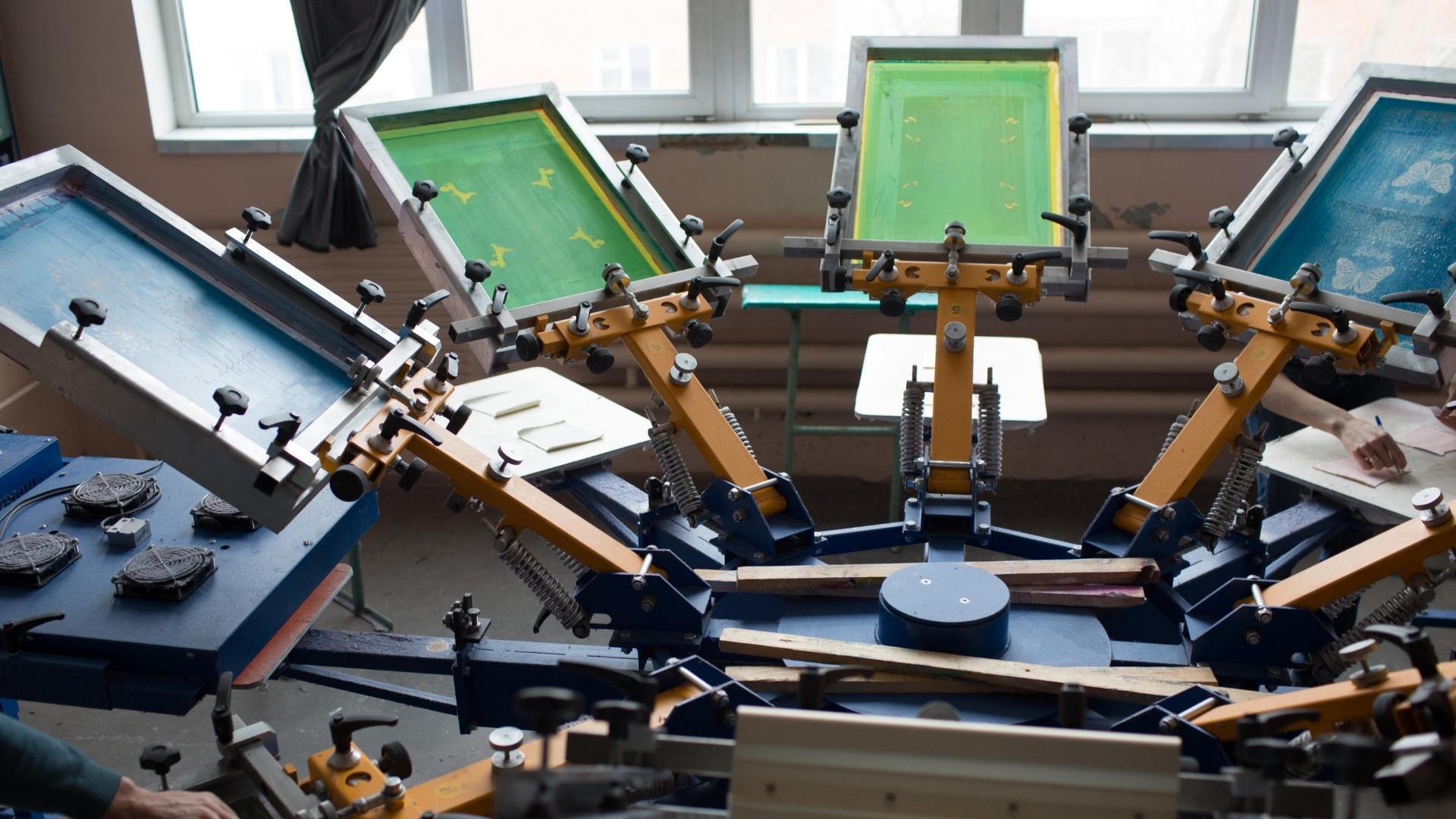The Important Overview to Recognizing Screen Printing and Its Versatile Utilizes
Screen printing has a rich background that goes back to ancient times, evolving right into a sophisticated strategy utilized throughout different industries today. This guide discovers the complexities of the screen printing process, describing its applications in style, advertising and marketing, and home decoration - 10:9 Design LLC Company. Recognizing these fundamentals can open up imaginative possibility for both commercial and creative projects. The adhering to areas will expose crucial suggestions and methods to boost one's screen printing endeavors
The History of Screen Printing
Screen printing has origins that trace back centuries, its development mirrors the creative and technical advancements of different societies. Coming from in old China, the technique was at first made use of for decorating fabrics and later spread to Japan, where it ended up being important to Ukiyo-e woodblock printing. The method moved to Europe in the 18th century, where it obtained appeal among craftsmens and industrial printers. The development of picture emulsion in the 20th century changed screen printing, permitting more intricate styles and better performance. Artists like Andy Warhol further pushed its popularity, making use of the medium to produce renowned jobs that blended commercialism and fine art. By the late 20th century, screen printing had actually developed itself as a functional method, employed in fashion, advertising and marketing, and art. Today, it continues to evolve, incorporating digital innovation and expanding its applications across various markets.
The Screen Printing Refine Explained
Screen printing transforms creative visions into tangible layouts through a collection of exact steps. At first, a photo is produced and after that transferred onto a screen, typically made from great mesh fabric stretched over a framework. A light-sensitive solution is applied to the screen, which is subjected to light, setting in areas not covered by the picture. After rinsing the unhardened solution, a pattern is developed.
Next off, the screen is placed over the substratum, whether it be textile, paper, or another product. Ink is then pressed through the open locations of the stencil using a squeegee, transferring the style onto the substrate below. This process can be duplicated for several shades, requiring separate displays for each and every tone. Lastly, the published product is treated using heat to guarantee the ink adheres correctly, resulting in a long lasting, vibrant design ready for use.
Sorts Of Screen Printing Techniques

Furthermore, specialized techniques, such as discharge screen printing, eliminate dye from the textile to produce softer prints, while aluminum foil screen printing uses metallic aluminum foil to accomplish a glossy finish (10:9 Design Texas). Each technique provides distinct features, providing to different imaginative demands and manufacturing scales, inevitably increasing the possibilities within the screen printing domain
Applications of Screen Printing in Different Industries

In addition, the signs and marketing markets utilize screen printing for producing distinctive display screens and banners. This approach permits vibrant shades and elaborate layouts that catch interest. In electronic devices, screen printing is employed for using conductive inks to circuit boards, important for component links. Furthermore, the home décor industry welcomes screen printing to create distinctive styles on textiles and wall art. In general, screen printing acts as a crucial device across diverse areas, enhancing items with customized and aesthetically Find Out More enticing graphics.
Tips for Successful Screen Printing Projects
While carrying out a screen printing job, careful attention to detail can considerably boost the last outcome. First, picking top quality materials is vital; this consists of the screen, inks, and substratums. Using proper mesh matters can influence ink deposition and information resolution. Prep work is similarly crucial; detailed cleaning of screens and appropriate exposure find times assure crisp prints.
Next off, exact registration is crucial for multi-color prints. Utilizing placement tools can help attain specific layering. Additionally, testing prints on scrap materials prior to manufacturing aids recognize prospective concerns without losing resources.

Often Asked Questions
What Products Are Finest for Screen Printing on Material?
Cotton and polyester blends are perfect for screen printing on material because of their sturdiness and ink absorption. Furthermore, specialty fabrics like silk or canvas can generate one-of-a-kind structures and finishes, enhancing the overall design high quality.
How Do I Tidy and Maintain Screen Printing Tools?
To keep and clean up screen printing tools, one need to on a regular basis clean displays with proper solvents, check squeegees for wear, lube relocating parts, and store all products in a dry, dust-free atmosphere to extend their lifespan.
What Are the Environmental Effects of Screen Printing?
Screen printing can have considerable environmental influences, including chemical waste from solvents and inks, water usage throughout cleansing processes, and energy intake. Lasting methods and eco-friendly products are crucial for lessening these unfavorable effects.
Can Screen Printing Be Done in your home Properly?
Screen printing can be properly done at home with the ideal materials and methods. Enthusiasts can create quality prints, though success depends upon their ability level, devices, and understanding of the procedure included.
What Are the Prices Related To Beginning a Display Printing Service?

Beginning a screen printing organization involves prices for tools, products, and office. Initial expenditures generally range from a few hundred to numerous lenticular signage thousand bucks, depending upon the scale, top quality of equipment, and desired production capacity.
Screen printing has a rich history that dates back to ancient times, advancing right into an innovative strategy utilized throughout numerous sectors today. An additional technique, rotary screen printing, utilizes cylindrical displays, facilitating continual printing on textile rolls, therefore improving efficiency for large manufacturings. Furthermore, specialty methods, such as discharge screen printing, remove dye from the material to produce softer prints, while aluminum foil screen printing applies metallic aluminum foil to attain a shiny surface. In the style field, screen printing is commonly made use of to develop lively designs on clothing, enabling brands to showcase their one-of-a-kind designs. Cotton and polyester blends are optimal for screen printing on textile due to their longevity and ink absorption.